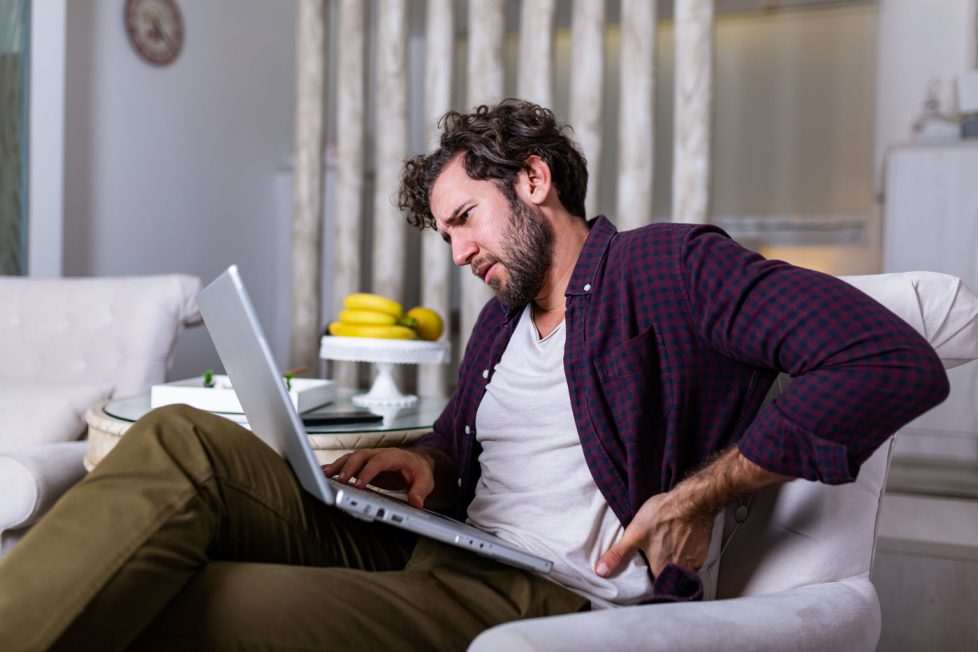Sedentary lifestyles and quality of life after the pandemic
Today our life seems to be divided in two big timelines: before the pandemic and after the pandemic.

Today our life seems to be divided in two big timelines: before the pandemic and after the pandemic.

After the pandemic – or since its beginning – our lives have undergone a series of changes, some of which were subtle, other rather abrupt. After the pandemic, which actually continues to pose profound challenges to society, the lifestyles of people all around the world have changed in many ways, resulting in the majority of cases in the adoption of a sedentary lifestile. Lockdowns during the COVID-19 pandemic have made many in the United States adjust to homebound lifestyles, the abrupt disappearance of their commutes, and a drastic increase in time spent sitting.
A few years before the pandemic started, in order to prevent and reduce inactivity, the World Health Organization (WHO) had designed a global plan called Global Action Plan on Physical Activity 2018–2030 (GAPPA). A series of actions and goals were set in the plan according to the state of physical activity in 2016. However, after the pandemic which has affected various aspects of lifestyle, including physical activity, the WHO is supposed to be reviewing the GAPPA and update its goals and actions according to the state of physical activity in 2020.
Between self-isolation, working from home and many businesses and facilities being closed, the coronavirus has resulted in more sedentary lifestyles for many after the pandemic. That’s led to both emotional and physical impacts on people. It is estimated that after the pandemic people in the United States are spending an average of 6 hours per day sitting, 4 hours more than they were before the pandemic.
A study published by researchers at The Chinese University of Hong Kong showed low physical activity levels, high amount of time spent on sedentary behaviors and long sleep duration in young adults after the pandemic, with less than half of the participants meeting any of the recommended guidelines for physical activity, sedentary behavior or sleep.

A sedentary lifestyle can be harmful to a person’s health. Sustained physical inactivity and sedentary behavior have been linked with poor physical and mental health and increased disease-specific morbidity and mortality risk. Many of these conditions develop over a long period of time, but even a short period of exposure to a sedentary lifestyle can impact your health.
For instance, incorporating exercising back into your routine after a period of even four days of inactivity could not counteract all the negative effects – imagine what this can mean after the pandemic. Given the numerous physical and mental benefits of increased physical activity and decreased sedentary behaviour, public health strategies should include the creation and implementation of interventions that promote safe physical activity and reduce sedentary behaviour should other lockdowns occur.
Sitting too much — as many of us are during lockdown at our computers or on our couches — is associated with increased risks for weight gain, heart disease, type 2 diabetes, and premature death, just to name a few. Once you get into a routine of not doing much, you can start feeling the effects right away. Muscle breakdown can start in as little as 24 hours, and aches and pains start to creep in. A sedentary behavior can also lead to increased back pain, which can make it less likely that a person will become active in the future – giving life to a vicious circle.
Experts recommend 150-300 minutes per week of moderate-intensity aerobic physical activity and 2 sessions per week of muscle strength training. Fit in 2, 5, 10 or 20 minutes, however and wherever you can. Every active minute counts! If you are indoor, put some music on and walk briskly around the house or up and down the stairs for 10- 15 minutes, 2-3 times per day.
Dance to your favorite music or try rope jumping (if your joints can handle it). You can even download an excercise video or use home cardio machines if you have them. Outdoor activities include walking or jogging around your neighborhood or, if you have the chance, spending more and more time in nature – which can even enhance immune function. You can download a strength workout app on your smartphone, there are many which don’t require specific equipments to be carried out and can be used pretty everywhere.
Mindfulness involves focusing your awareness on the present moment. It means paying attention to your sensations, feelings, thoughts, and environment in the here-and-now with an attitude of acceptance. Some of the potential benefits of mindfulness include lowering stress, decreasing depression, improving memory, and strengthening your relationships, among other things. It is proven that activities such as meditation, body scan exercise, and yoga help people focus on becoming more aware and accepting of their thoughts.
